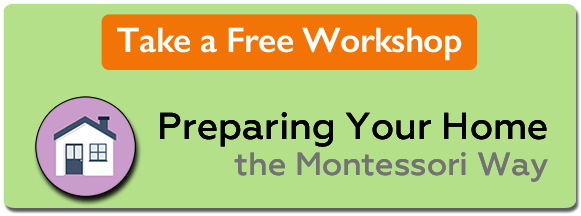
Children from about age three are asking us to help them learn independence.
Children want to learn how to do things on their own without adult supervision or permission. Even though at times we feel we have to help children constantly, in reality, children are asking us to help them help themselves.
Much of what we classify as “misbehavior” in the three to six-year-old, upon closer inspection, is children trying to do things by themselves, and not being successful.
In our hurried world, it’s easier to do it ourselves than to stop and show our children how to do a task, and patiently wait as they complete it. Do we really have 15 minutes every morning for our three-year-old to put on her shoes and socks?
Visiting friends a few years ago, I asked their nine-year-old if he’d like to help me cut apples for a pie. Jimmy’s eyes widened. “Oh, no, I can’t. Mom won’t let me use a knife.”
“Why is that? Were you irresponsible with a knife?”
“No. Mom’s afraid I’ll cut myself.”
After getting an okay with Jimmy’s mom, I began showing him how to cut the apples into chucks after I’d peeled and quartered them. Within half an hour, Jimmy had learned how to peel, quarter and cube apples. And not a mangled finger in sight. At dinner Jimmy was so proud of “our’ pies. He thanked me for taking the time to show him how to use a paring knife. “I knew I could do it if someone just let me.”
Help me help myself.
We can begin to show our children how to use serious tools such as knives, scissors, hammers, and screwdrivers around age three, with 100 percent adult supervision.
First, we need to feel confident that the child will listen and follow our direction. If not, he or she is not ready for these kinds of tasks.
Secondly, we need to find tools that are safe. For helping in the kitchen a small butter knife or canapé knife will cut bananas and apple slices, but won’t cut small fingers. There are scissors available that will only cut paper, and not hair or clothes. Small hammers can be used to drive 16 penny-nails into a log end. For hammering, invest in a pair of child sized safety goggles. A short three-inch screwdriver and ratchet can be used to loosen and tighten screws and bolts on boards.
As a child’s level of skill and responsibility grow, we can introduce new levels of difficulty with different tools and materials.
Giving our children “real” work with real tools will help them gain independence. Self-esteem is based on having skills, meaning you can act in ways that benefit yourself and others. Too often, adults think that just telling someone that they are wonderful develops a feeling of self worth. Self-esteem is based on the self-confidence of knowing how to do something, not on what someone says to you.
“Help me help myself” is the young child’s cry for independence that leads to true confidence and self-esteem. Don’t do for your child what they can do for themselves.
Remember, any unnecessary help is an obstacle to a person’s independence.


Beautifully said! As a Montessori guide, I am challenged at the beginning of every school year to help parents understand that early Montessori education is not about advanced academics. Advancing self-reliance is more our focus.
Yes, it’s about concentration and independence.
When we can help a child develop those two qualities, that can “help themselves” for a lifetime.
Thanks, Kimberly.
I’ve really been struggling with getting my 2.5 year old to get dressed in the mornings. I don’t necessarily see a connection between her wanting to do it herself compared to simply not really making the connection between needing daytime clothes and going out. Maybe I haven’t provided a strong enough routine for it but feel like I’ve lost control! I like the idea of her doing it herself, and honestly, if it was about her working at it, I feel like I might be more hopeful. I just feel like I spend a lot of time trying to negotiate with her.
Ruth,
Routine is important. One way you can help establish routine is to use this phrase,”Now it is time to…”.
Now it is time to eat, get dressed, go to the car.
Some things are not negotiable and we need to be clear about it with our children.
Here’s an article about when to ask, when to tell:
http://marenschmidt.com/2009/08/when-to-ask-when-to-tell/
Also we should try to give choices when appropriate. A Kids Talk article about that is here:
http://marenschmidt.com/2004/11/to-foster-cooperation-give-choices/
Perhaps letting your daughter choose between two outfits will help get her going in the right direction in the morning.
Let me know how it goes!